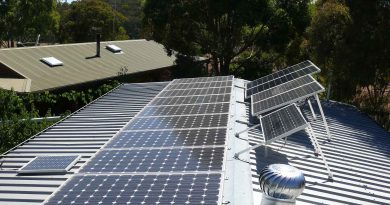is solar panel worth it in india
Investing in solar panels can be a smart financial decision for homeowners and businesses in India. However, understanding the return on investment (ROI) is crucial to making an informed choice. This guide provides a comprehensive overview of the factors affecting solar panel costs and savings, the analysis of payback periods, and the long-term financial benefits of solar power. By the end of this guide, you’ll have the tools to evaluate the ROI of solar panels for your specific situation.
Table of Contents
- 1 Calculating the Cost of a Solar Panel System in India
- 2 Estimating Potential Energy Savings
- 3 Analyzing Payback Periods and Return on Investment
- 4 Considering the Impact of Government Incentives
- 5 Evaluating the Long-Term Financial Benefits of Solar Power
- 6 Comparing Solar Power to Grid Electricity Costs
- 7 Factors Influencing the ROI of Solar Panels in India
- 8 Tips for Optimizing Solar System Performance to Increase ROI
- 9 The Role of Battery Storage in Improving ROI
- 10 Case Studies of Successful Solar Panel Investments in India
- 11 The Future of Solar Energy and Its ROI Potential in India
- 12 FAQs
- 13 Conclusion
Calculating the Cost of a Solar Panel System in India
The cost of a solar panel system in India depends on several factors, including system size, panel efficiency, brand, and installation costs.
Key Cost Components:
- Solar Panels: The most significant portion of the cost, depending on the type (monocrystalline, polycrystalline, thin-film) and efficiency.
- Inverter: Converts DC power generated by panels to AC power used in homes.
- Mounting Structure: Supports and secures the panels on the roof or ground.
- Installation: Labor costs for setting up the system, which vary by location and complexity.
- Additional Equipment: Includes wiring, switches, and circuit breakers.
| System Size (kW) | Approximate Cost (₹/kW) | Total Cost (₹) (Without Subsidy) |
|---|---|---|
| 1 kW | ₹50,000 – ₹60,000 | ₹50,000 – ₹60,000 |
| 3 kW | ₹45,000 – ₹55,000 | ₹1,35,000 – ₹1,65,000 |
| 5 kW | ₹40,000 – ₹50,000 | ₹2,00,000 – ₹2,50,000 |
| 10 kW | ₹35,000 – ₹45,000 | ₹3,50,000 – ₹4,50,000 |
Estimating Potential Energy Savings
Energy Savings: The savings from solar panels come from reducing or eliminating your electricity bills. The exact amount depends on your location, electricity consumption, and the system’s size.
Example Calculation:
- Average Monthly Consumption: 500 kWh
- Electricity Rate: ₹6 per kWh
- Annual Savings: 500 kWh/month×12 months×₹6/kWh=₹36,000500 \text{ kWh/month} \times 12 \text{ months} \times ₹6/\text{kWh} = ₹36,000
Analyzing Payback Periods and Return on Investment
Payback Period: The payback period is the time it takes for the savings on your electricity bills to equal the cost of the solar panel system.
ROI (Return on Investment): ROI measures the profitability of your solar investment. A higher ROI indicates a better financial return.
Example Calculation:
- System Cost: ₹2,00,000
- Annual Savings: ₹36,000
- Payback Period: ₹2,00,000₹36,000=5.56 years\frac{₹2,00,000}{₹36,000} = 5.56 \text{ years}
- ROI (over 20 years):
\text{Total Savings} = ₹36,000 \times 20 = ₹7,20,000 \] \[ \text{ROI} = \frac{₹7,20,000 – ₹2,00,000}{₹2,00,000} \times 100 \approx 260\%
Considering the Impact of Government Incentives
The Indian government offers subsidies and incentives that can significantly reduce the cost of solar panel systems.
Central Government Subsidy:
- Up to 40% subsidy for systems up to 3 kW.
- 20% subsidy for systems between 3 kW and 10 kW.
State-Level Incentives: Additional subsidies, net metering benefits, and tax rebates are available in states like Gujarat, Maharashtra, and Tamil Nadu.
Evaluating the Long-Term Financial Benefits of Solar Power
Over time, solar panels can lead to substantial financial savings by reducing or eliminating electricity bills. The savings increase as electricity rates rise.
Key Long-Term Benefits:
- Energy Independence: Reduces reliance on grid electricity, protecting against future rate increases.
- Property Value: Solar installations can increase property value.
- Environmental Impact: Reduces carbon footprint and supports sustainability.
Comparing Solar Power to Grid Electricity Costs
Solar energy offers lower long-term costs compared to grid electricity, especially as electricity rates continue to rise.
| Cost Factor | Solar Power | Grid Electricity |
|---|---|---|
| Upfront Cost | High initial investment | No upfront cost |
| Ongoing Cost | Minimal (maintenance) | Increasing with rate hikes |
| Environmental Impact | Minimal, renewable energy source | High carbon emissions |
| Energy Independence | High, especially with battery storage | Dependent on utility companies |
Factors Influencing the ROI of Solar Panels in India
Several factors can influence the ROI of solar panels:
- System Size: Larger systems generally offer better economies of scale and higher ROI.
- Panel Efficiency: Higher efficiency panels generate more electricity, increasing savings.
- Installation Costs: Lower installation costs improve ROI.
- Electricity Rates: Higher electricity rates increase the savings and improve ROI.
- Sunlight Availability: Locations with more sunlight offer higher energy production and better ROI.
Tips for Optimizing Solar System Performance to Increase ROI
- Optimize Panel Placement: Ensure panels are placed in areas with maximum sunlight exposure.
- Regular Maintenance: Keep panels clean and check for issues to maintain efficiency.
- Monitor Performance: Use monitoring systems to track performance and address any issues promptly.
- Consider Net Metering: Feed excess energy back to the grid for additional savings.
- Use Energy-Efficient Appliances: Reduce overall energy consumption to maximize the impact of your solar system.
The Role of Battery Storage in Improving ROI
Battery Storage: Adding a battery to your solar system allows you to store excess energy for use during the night or cloudy days, reducing dependence on the grid and further improving ROI.
Pros of Battery Storage:
- Energy Independence: Greater control over energy usage and protection against power outages.
- Enhanced Savings: Store energy when rates are low and use it when rates are high (time-of-use pricing).
- Environmental Impact: Maximizes the use of renewable energy.
Case Studies of Successful Solar Panel Investments in India
Case Study 1: Residential Solar Installation in Pune
- System Size: 5 kW
- Total Cost: ₹2,25,000 (after subsidy)
- Annual Savings: ₹40,000
- Payback Period: 5.63 years
- ROI (over 20 years): 274%
Case Study 2: Commercial Solar Installation in Chennai
- System Size: 50 kW
- Total Cost: ₹20,00,000 (after subsidy)
- Annual Savings: ₹6,00,000
- Payback Period: 3.33 years
- ROI (over 20 years): 500%
The Future of Solar Energy and Its ROI Potential in India
As solar technology advances and the cost of solar panels continues to decrease, the ROI potential of solar energy in India is likely to improve. Factors such as better panel efficiency, reduced installation costs, and supportive government policies will play a significant role in driving adoption and maximizing financial returns.
FAQs
1. How do I calculate the ROI of a solar panel system?
- Calculate the total savings over the system’s lifetime, subtract the initial cost, and divide by the initial cost. Multiply by 100 to express it as a percentage.
2. What is the typical payback period for solar panels in India?
- The payback period typically ranges from 5 to 8 years, depending on system size, location, and energy consumption.
3. How do government subsidies affect the ROI of solar panels?
- Subsidies reduce the upfront cost, shortening the payback period and increasing the ROI.
4. Can adding battery storage improve the ROI of my solar system?
- Yes, battery storage can enhance energy independence, reduce reliance on the grid, and increase savings, improving ROI.
5. Is solar energy more cost-effective than traditional electricity in India?
- Over the long term, solar energy is more cost-effective due to reduced electricity bills and protection against rising grid rates.
Conclusion
Evaluating the ROI of solar panels in India involves considering various factors, including system costs, potential savings, government incentives, and long-term financial benefits. By understanding these elements and optimizing your solar system’s performance, you can maximize your investment and contribute to a more sustainable future. With the right approach, solar energy can offer substantial financial returns and energy independence for years to come.



